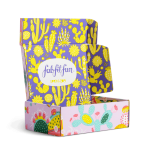In the world of culinary arts and craftsmanship, the first impression often begins not with the blade itself, but with the container that houses it. Knife packaging boxes have evolved from mere protective shells into sophisticated statements of quality, value, and brand identity. These carefully designed containers serve as the crucial bridge between manufacturer and consumer, transforming ordinary cutting tools into extraordinary possessions worth cherishing for generations.
The psychology behind premium knife packaging is fascinating. When a customer receives a knife encased in an elegant, well-constructed box, their perception of the product’s value instantly elevates. The unboxing experience becomes a ritual—a moment of anticipation and delight that reinforces the quality of their purchase. Luxury brands have long understood this phenomenon, investing significantly in packaging that communicates excellence before the product is even revealed. The weight of the box, the texture of the materials, the precision of the fit—all these elements work together to create an emotional connection that begins the moment the package is in the customer’s hands.
Modern knife packaging boxes serve multiple essential functions beyond mere aesthetics. High-quality materials like rigid cardboard, reinforced plastics, and custom foam inserts provide crucial protection during shipping and storage. The interior architecture of these boxes is often engineered with precision-cut compartments that cradle the knife securely, preventing movement that could cause damage to the blade or handle. For professional chefs and collectors who invest in high-end cutlery, this protective assurance is not just a convenience—it’s a necessity that preserves their valuable investment.
Branding opportunities through custom knife packaging are virtually limitless. The exterior surface becomes a canvas for communicating brand values, product information, and design aesthetics. From minimalist designs that speak to Japanese craftsmanship to rugged, textured boxes that reflect outdoor survival knives, the packaging tells a story before the knife is ever used. Many manufacturers incorporate special features like magnetic closures, ribbon pulls, and certificate windows that enhance both functionality and perceived value. These thoughtful touches demonstrate attention to detail that customers naturally associate with the quality of the blade inside.
Environmental considerations have become increasingly important in knife packaging design. Conscious manufacturers are now opting for sustainable materials like recycled cardboard, biodegradable foams, and soy-based inks. The move toward eco-friendly packaging not only appeals to environmentally conscious consumers but also reflects positively on brands that prioritize sustainability. Many companies have developed innovative solutions like plantable seed paper inserts or packaging that can be repurposed as display cases, adding value beyond the initial unboxing experience.
The evolution of knife packaging has also been driven by practical considerations for different user scenarios. Kitchen knife sets often feature multi-compartment boxes with clear lids for easy identification, while pocket knives might come in compact, durable cases suitable for travel. Collector’s edition knives frequently arrive in presentation-grade boxes with plush interiors, perfect for display. The diversity in packaging solutions reflects the understanding that different knives serve different purposes and their packaging should align with those specific use cases.
For retailers, effective knife packaging serves as a silent salesperson on shelves. Eye-catching designs with strategic window cutouts allow customers to view the product while protective packaging keeps it secure from handling. The packaging must communicate key selling points quickly and effectively, often through clever use of imagery, typography, and color schemes that appeal to the target demographic. In e-commerce, packaging takes on additional importance since it must survive the rigors of shipping while still delivering that coveted unboxing experience that customers increasingly expect.
Looking toward the future, smart packaging technologies are beginning to emerge in the knife industry. QR codes that link to tutorial videos, NFC chips for authentication, and temperature-sensitive materials that indicate potential damage during transit represent the next frontier in knife packaging innovation. These technological integrations add layers of functionality and engagement that further enhance the customer experience while providing practical benefits for both consumers and manufacturers.
Ultimately, the humble knife packaging box has transformed into an essential component of the product ecosystem—one that protects, presents, and promotes the valuable tool within. Whether it’s a chef’s first professional knife or a collector’s limited edition piece, the right packaging elevates the entire ownership experience from transaction to treasure. In a market where perception often determines value, investing in quality knife packaging isn’t just about containing a product—it’s about unleashing its full potential in the hands of those who will use and appreciate it most.




Leave a Message